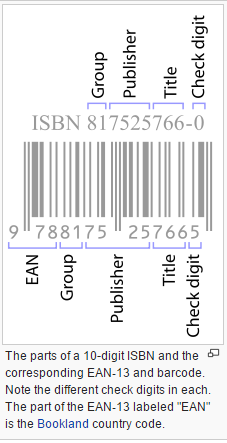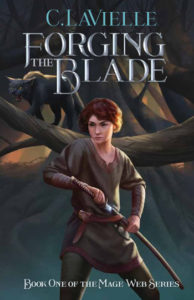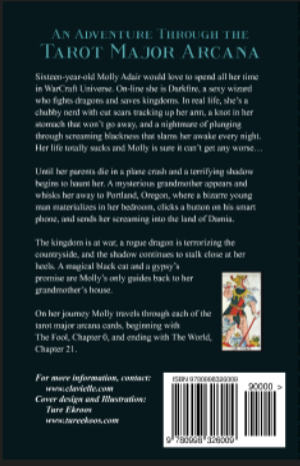The front cover of a book is all glam. It’s what catches the reader’s eye and pique’s their curiosity. The back cover, however, is all business. On a trade paperback, which is what Forging the Blade will be, the most noticeable element is the blurb, one of the most difficult things an author ever writes. It usually begins as rewrite after rewrite of query letters to agents and is later distilled down to its essence for the book cover. In a few, screaming sentences it must tell enough about the book to convince someone that they really want to read it; but it must never give away the ending and or get tangled up in too much plot. Trust me, it’s an excruciating exercise. I can’t even begin to count the number of rewrites my cover blurb went through.
I chose to include a tarot card to give color and interest. This is where I learned about copyrights. Even though the most popular tarot decks were first created in 1910 ( the Rider Waite Smith deck) and the 1400’s (the Marseilles decks) and should be in public domain, they aren’t. The card companies that produce them are constantly brightening, re-coloring, and sharpening their lines, and with each change, they buy a new copyright. So I was unable to use them for the cover. Mike Howard, a friend and tarot historian, found me a picture of The Fool from a Marseilles deck produced in the 18th century by Francoise Chosson. It was definitely in public domain, but another friend, who is a patent lawyer, was quick to point out that the image of the card was created by someone and is therefore copyrighted. Fortunately the image was in Taropedia, a marvelous website full of hundreds of fabulous tarot images. In their instructions to their contributors they state unless an image is specified as being copyrighted, all images on their site are copyright free. I am fond of the Chosson Fool and was overjoyed that I had, at last, found a tarot image I could use.
In the lower left corner I mention my website and contact info and give credit to Ture Ekroos, my front cover illustrator and designer.

Which brings us to that black-and-white striped box in the lower right corner. It contains a barcode for the book’s thirteen digit ISBN (International Standard Book Number). If you want to sell your book, have it in libraries and listed in books in print, this number is a must. If you scan an ISBN, it will tell you the book’s country or geographical region/group, title, edition, publisher and includes a check digit to validate the number. When a book is published in a different size or format, or as an e-book, or as an audio book it must have a new ISBN. The barcode also gives the book’s suggested retail price, but that’s not part of the ISBN.
CreateSpace will give you a free ISBN, but if you ever change publishers you will need to buy another one. I decided it was better and safer to just purchase my own ISBN and copyright (yet another hassle), so I bought ten numbers from Bowker, the official ISBN Agency for the U.S. and its territories and Australia. It took me several hours and much frustration to complete the process, but I’m a spaz when it comes to filling out forms. I purchased a copyright from an app that Bowker sells called CopyrightsNow. The process was confusing and many of the questions were in translated legalese, but, with help, I was able to complete the form, upload the manuscript, and file it with the Library of Congress.
Because I bought my own ISBN, CreateSpace cannot make my books available to libraries. For me, this is a huge problem. I love libraries, and want to have my book in as many of them as possible. This way anyone can read it. Also, most brick and mortar bookstores will not buy from CreateSpace, which is a subsidiary of Amazon. This is partly on principal, but mostly because CreateSpace has a no return policy. I am actually content with this, because I (the publisher) would be the one paying CreateSpace (at my cost) for all those returned books. The other problem is that CreateSpace will help you upload your book to Kindle, but not to any other e-books.
 To remedy these problems, I will be using Ingram-Sparks as a second distributor. They will make Forging the Blade, (in hard copy and e-books) available to libraries; and brick-and-mortar stores will buy from them. However, I will indicate “no returns” on my distribution specifications until I have a bit of money in my book account to cover returns, and then I will switch the specs to “returns”.
To remedy these problems, I will be using Ingram-Sparks as a second distributor. They will make Forging the Blade, (in hard copy and e-books) available to libraries; and brick-and-mortar stores will buy from them. However, I will indicate “no returns” on my distribution specifications until I have a bit of money in my book account to cover returns, and then I will switch the specs to “returns”.
It took a ton of research to figure all this out. There are books on self-publishing, which I should have read. It probably would’ve made this whole process much easier. I did ask the Multnomah County Library information service about how to self-publish hard-copy-books and e-books that libraries can buy. The answers and web links they sent were excellent and made my life so much easier.
So, the upshot of all this is that Forging the Blade will be available soon on Amazon and Kindle, and then at a few Portland, Oregon bookstores, and then, through Ingram-Sparks, more brick-and-mortar stores and libraries throughout the US, Europe, and Australia.




4 thoughts on “Self-Publishing: The Back Cover: More Than You Ever Wanted to Know About ISBNs and Copyrights”
Cover looks great! Kudos for all the effort to learn self-publishing!
Thanks! It was a struggle.
Can’t wait to read it!
Congratulations, Chrissy. I really admire the skill, effort, and dedication it took for you to give birth to this, your creation. And I feel privileged to have participated early on in our seminar/critique group. Best of luck with the novel. David Bennett